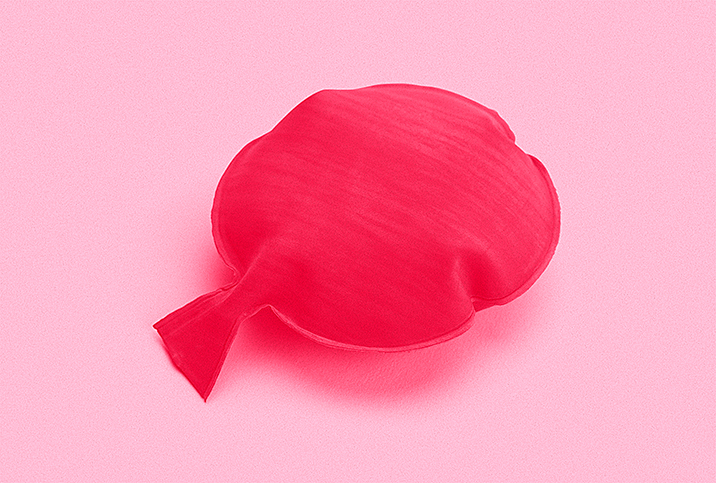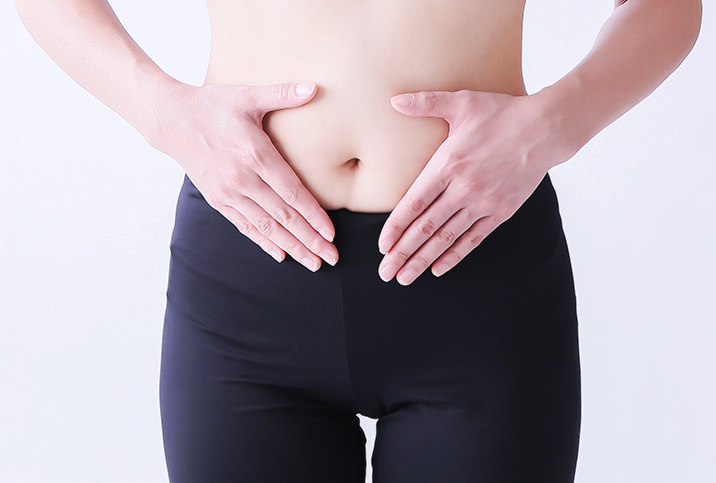What Causes Queefing During Sex or Exercise?

Whether ill-timed or not, flatulence is typically brushed aside as an ordinary, unfortunate, but expected part of being a human. However, when these gusts come from the vagina—commonly referred to as queefing or vaginal flatus—the effect can prove much more embarrassing.
Likely, you've heard your share of comments and jokes about queefing. However it's common and, most often, perfectly normal.
But is there a point where you should be concerned?
What is queefing?
Queefing or vaginal flatus is actually not flatus at all.
"It is external air that has become trapped in the vaginal canal, not gas produced during digestion," said Somi Javaid, M.D., founder and chief medical officer of HerMD, a female-founded healthcare startup focusing on women's sexual health and menopause that's based in Cincinnati, Ohio.
Queefing occurs when air is forced into the vagina, then becomes trapped and expelled when the muscles of the vaginal wall naturally contract. It's a natural phenomenon and although it's typically odorless, it can be embarrassing, especially if you happen to be having sex or doing a difficult stretch in your yoga class.
Although typically harmless, there can be incidences when queefing indicates something more serious, such as pelvic floor weakness or other more severe issues with the region.
For the most part, queefing is normal
"In most cases, vaginal flatus is completely normal," said Amir Marashi, M.D., OB/GYN and CEO of CERĒ, based in Brooklyn, New York. "Definitely, some positions [during sexual activity] can cause it more than others."
Most people find rear entry positions such as the all-fours doggy style are the biggest culprit, especially when switching from this position to your back or flat on your stomach.
Queefing can also happen during yoga or other forms of exercise, and everyday movement or when inserting a tampon, sex toy or your fingers into the vagina.
Especially when you're aroused, the vagina opens to accommodate entry, allowing more air to enter and leading to trapped air expelling when you move. According to Marashi, these scenarios are perfectly normal and a shared experience among anyone with a vagina.
Queefing when pelvic floor muscles are weak
"The health and tone of your pelvic floor are important," Javaid said. "When there is a loss of tone within the pelvic floor, air can more easily enter the inside of the vagina. Hormonal changes, pregnancy, weight gain and a sedentary lifestyle are all factors that can negatively affect the health of your pelvic floor, allowing air to enter the vaginal canal."
In truth, queefing is a part of unavoidable physiology and is standard during sex. If your sexual partner is bothered by it, they should learn to better understand the messy world of human anatomy and biological functions.
If you believe queefing for you is abnormal or is caused by weak pelvic floor muscles, there are ways you can reduce its occurrence, such as strengthening your pelvic floor.
Javaid recommended taking steps including physical therapy, Kegels, yoga, hormone therapy and treatment with technological devices intended to increase vaginal tone.
You can also work with a physical therapist specializing in the pelvic floor.
"A pelvic floor physical therapist can assess your current muscle function, provide education for strategies to reduce your symptoms, give clear guidance on restoring your pelvic floor strength and offer you the support you need," she added.
When to be concerned
Although queefing is often harmless, there are circumstances when it indicates something more serious is occurring.
"If you notice anything beyond air in the vagina, such as fluid leaking from the vagina, contact your health care provider for an evaluation," Javaid said.
Rarely, an abnormal opening or connection can develop between the vagina and a nearby organ, such as the rectum or bladder. This is called a rectovaginal fistula and can cause gas or stool to pass through to the vagina.
Another serious issue is pelvic organ prolapse, which can cause a feeling of heaviness, dragging and wind in the vagina, leading to queefing during everyday activities. If this happens to you, you should speak to your healthcare provider and seek pelvic floor physiotherapy.


















